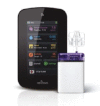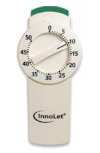Insulin delivery device technology 2012: where are we after 90 years?
- PMID: 22920823
- PMCID: PMC3440168
- DOI: 10.1177/193229681200600428
Insulin delivery device technology 2012: where are we after 90 years?
Abstract
Since the first successful use of insulin in 1921 to treat diabetes at Toronto General Hospital, the major advances in development of the medication itself have taken place in parallel with equally significant developments in the means of delivery. Administration of insulin remains parenteral. This article reviews the main variants in prescription-available delivery technology: vial and syringe, pen injector, needle-free injection, and continuous subcutaneous insulin infusion pumps. For each of these, the background and major milestones are covered briefly and followed by a discussion of the latest product innovations, technologies, and implementations, which are all considered in the context of the interaction with users. The article concludes by reflecting upon how the progress in the technology of diabetes management can best serve the patient. The spectacular technological advances in medication, monitoring, and delivery since 1922 have transformed the lives of millions. However, the fact that we can add sophisticated technology to delivery devices and accessories does not mean it is always the best thing for the patient. Electronic sophistication may be welcomed by a young, eager type 1 diabetes patient, while a senior citizen who discovers he has type 2 diabetes may yearn for simplicity. Technology continues to provide great solutions, but the type of solution delivered must be matched to the user if the maximum benefit is to be achieved for all.
© 2012 Diabetes Technology Society.
Figures








References
-
- Bliss M. The discovery of insulin. Edinburgh: Paul Harris; 1983.
-
- IMS Health. www.imshealth.com. April 2011.
-
- RNCOS Industry Research Solutions. Insulin delivery systems market analysis (2008-2012). RNCOS; 2011.
-
- Hingson RA. The development of the Hypospray for parenteral therapy by jet injection. Anesthesiology. 1949;10(1):66–75. - PubMed
-
- ShareCare.com. How does a jet injector for insulin use work? www.sharecare.com/question/how-jet-injector-insulin-work.
Publication types
MeSH terms
Substances
LinkOut - more resources
Full Text Sources
Other Literature Sources
Medical

